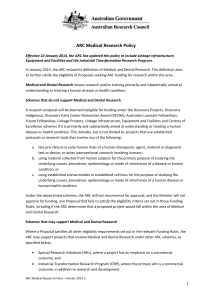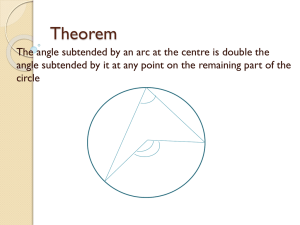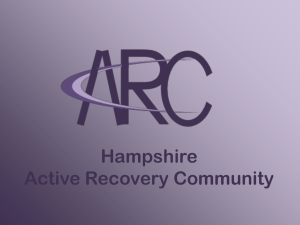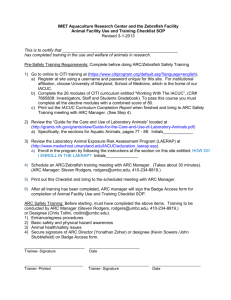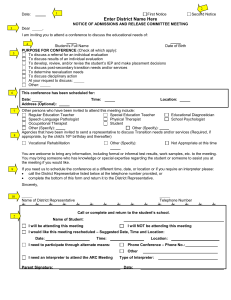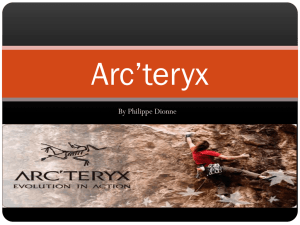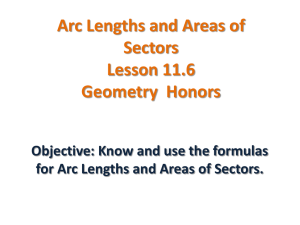ARC Grant Applications: What Wins
advertisement
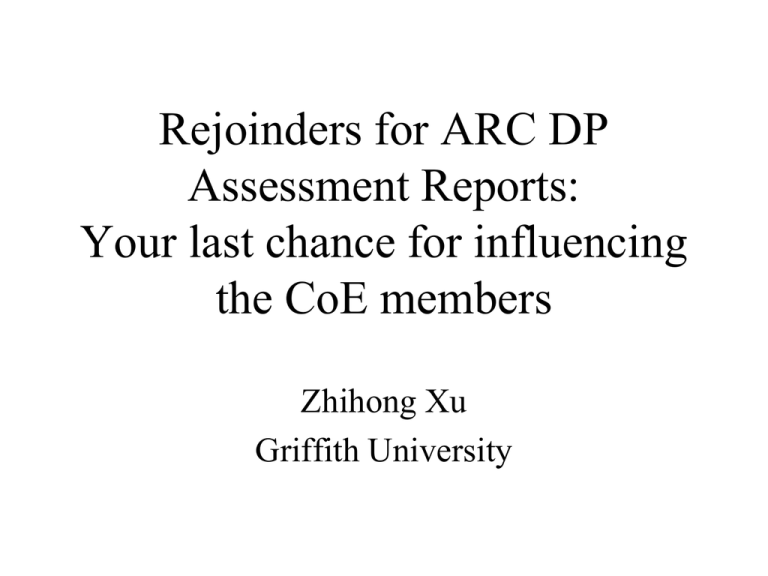
Rejoinders for ARC DP Assessment Reports: Your last chance for influencing the CoE members Zhihong Xu Griffith University The objectives of Discovery Projects for 2014 funding • support excellent basic and applied research by individuals and teams; • enhance the scale and focus of research in the National Research Priorities; • expand Australia’s knowledge base and research capability; The objectives of Discovery Projects for 2014 funding (Continued) • encourage research and research training in high-quality research environments; • enhance international collaboration in research; and • foster the international competitiveness of Australian research. ARC DP Selection Criteria for 2014 Funding • a. Investigator(s) (40%) • Research opportunity and performance evidence (ROPE); and • Time and capacity to undertake the proposed research; ARC DP Selection Criteria for 2014 Funding (Continued) • b. Project Quality (25%) • Does the research address a significant problem? • Is the conceptual / theoretical framework innovative and original? • Will the aims, concepts, methods and results advance knowledge? ARC DP Selection Criteria for 2014 Funding (Continued) • c. Feasibility and Benefit (20%) • Do the Project’s design, participants and requested budget create confidence in the timely and successful completion of the Project? • Will the completed Project produce innovative economic, environmental, social and/or cultural benefit to the Australian and international community? • Will the proposed research be value for money? ARC DP Selection Criteria for 2012 Funding (Continued) • d. Research Environment (15%) • Is there an existing, or developing, supportive and high quality research environment for this Project? • Are the necessary facilities to complete the Project available? • Are there adequate strategies to encourage dissemination, commercialisation, if appropriate; and promotion of research outcomes? It’s all about ranking… • With five times as many applications as funding, ranking is used to apportion funds • The ARC process is designed to rank all applications and fund as many of the top ranked applications as monies allow • So each applicant is competing with hundreds of others to be in the top ca. 20% for DP proposals The ranking process • Select the most relevant research fields, courses and disciplines (RFCD) and use important key words for the most appropriate ARC Panel to assess • Applications are ranked by two sets of appraisers, with increasing levels of specialism: – EACs (CoE members) read and rank 100-200 applications – Specialist Assessors – Rejoinders (in response to the Assessor Reports) The basis of rankings • EACs are likely to be approach (or general) but not necessarily area specialists • They read hundreds of applications proposing important research on under-studied areas by talented academics • They look for a research idea that is compelling and original even to a non-specialist (e.g. project title and 100 word summaries) • And a research plan that is detailed and wellsuited to the project for an approach specialist Rejoinders • The rejoinder is an important part of the ranking process, and it is your last chance to influence the CoE members (EACs1 and 2) • The rejoinder should be calm, considered and diplomatic, and it should be self-explanatory • Use positive language and make it concise and easy to follow • It is often useful to reference any new work or highlight any significant relevant publications • It is the CoE members who would read the rejoinders and modify the rankings if justified. Thanks and Best Wishes • Any comments and questions?




